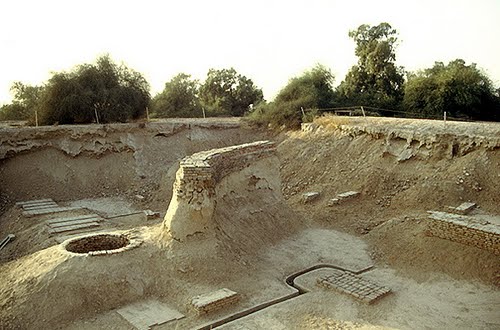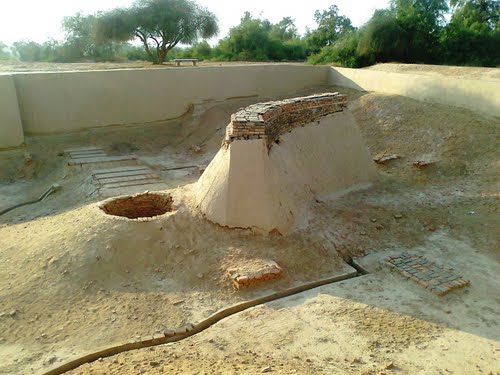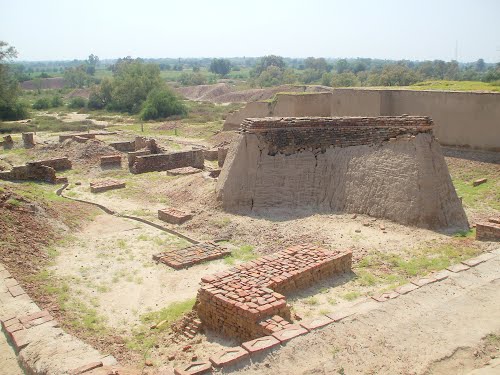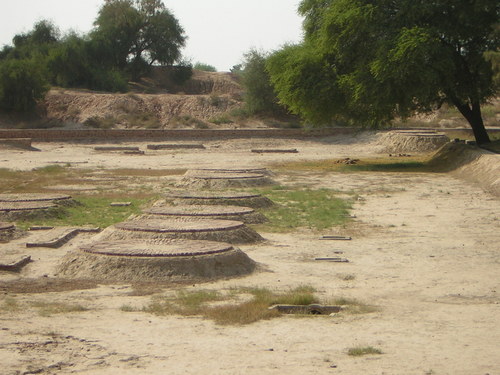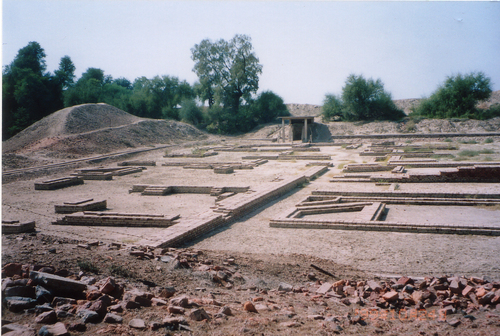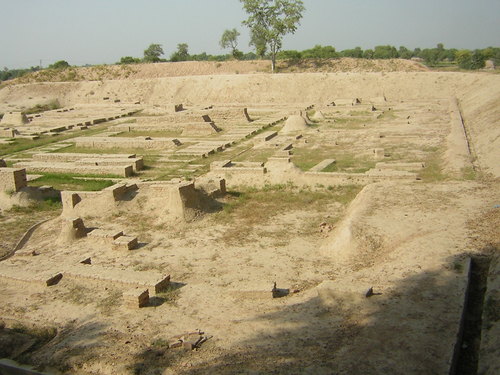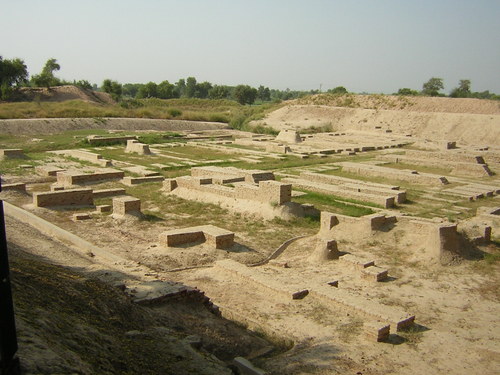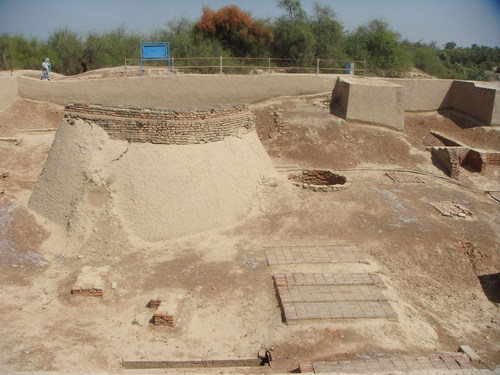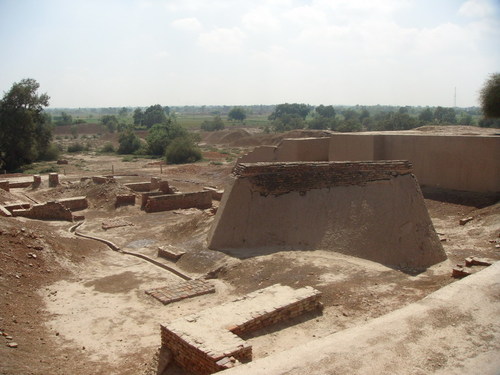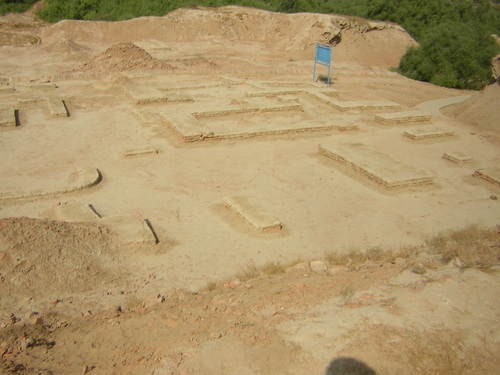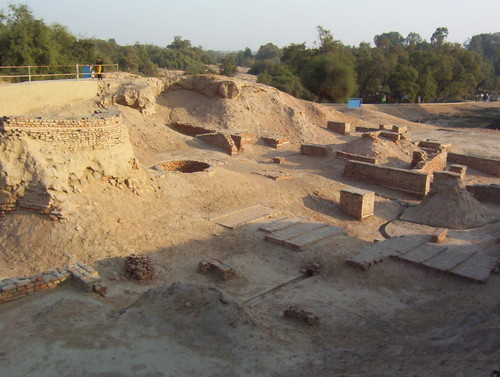Harappa is an archaeological site in Punjab, Pakistan, about 24 km west of Sahiwal. The site takes its name from a modern village located near the former course of the Ravi River. The current village of Harappa is 6 km from the ancient site. Although modern Harappa has a legacy railway station from the period of the British Raj, it is today just a small crossroads town of population 15,000.
The site of the ancient city contains the ruins of a Bronze Age fortified city, which was part of the Cemetery H culture and the Indus Valley Civilization, centered in Sindh and the Punjab. The city is believed to have had as many as 23,500 residents and occupied about 150 hectares with clay sculptured houses at its greatest extent during the Mature Harappan phase (2600–1900 BC), which is considered large for its time. Per archaeological convention of naming a previously unknown civilization by its first excavated site, the Indus Valley Civilization is also called the Harappan Civilization.
The ancient city of Harappa was heavily damaged under British rule, when bricks from the ruins were used as track ballast in the construction of the Lahore-Multan Railway. In 2005, a controversial amusement park scheme at the site was abandoned when builders unearthed many archaeological artifacts during the early stages of building work. A plea from the Pakistani archaeologist Ahmad Hasan Dani to the Ministry of Culture resulted in a restoration of the site.
History
The Indus Valley Civilization has its earliest roots in cultures such as that of Mehrgarh, approximately 6000 BCE. The two greatest cities, Mohenjo-daro and Harappa, emerged circa 2600 BCE along the Indus River valley in Punjab and Sindh. The civilization, with a possible writing system, urban centers, and diversified social and economic system, was rediscovered in the 1920s after excavations at Mohenjo-daro in Sindh near Larkana, and Harappa, in west Punjab south of Lahore. A number of other sites stretching from the Himalayan foothills in east Punjab, India in the north, to Gujarat in the south and east, and to Pakistani Balochistan in the west have also been discovered and studied. Although the archaeological site at Harappa was damaged in 1857 when engineers constructing the Lahore-Multan railroad, used brick from the Harappa ruins for track ballast, an abundance of artifacts has nevertheless been found. The bricks discovered were made of red sand, clay, stones and were baked at very high temperature.As early as 1826 harappa located in west punjab attracted the attention of a british officer in Inidia,gets credit for preliminary excavations in harappa.


